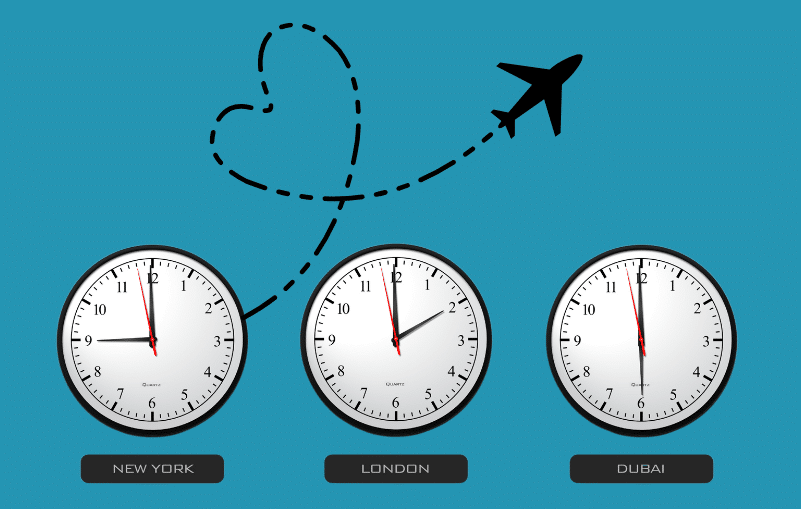Calendar Management That Travels With You

When you’re running a business while traveling, whether across time zones or working remotely from a hotel, your calendar needs to keep up. Meetings can easily be missed or scheduled at the wrong time if your calendar isn’t synced properly for your needs.
Everyone travels differently, and your calendar can reflect that.
Here are a few calendar strategies I use with clients to help them stay organized and on track, no matter where they’re working from:
1. Block Travel Dates on Your Calendar. This is often overlooked. But think about it. If your schedule appears open, your team may not know you’re in transit and schedule an important meeting while you are mid-flight.
To avoid this, add all of your travel details to your calendar:
- Block time for transit to and from the airport.
- Include flight details and attach your itinerary for easy reference (especially helpful for tracking business expenses).
2. Choose a Time Zone Strategy. Calendar clarity is a must when traveling. One of the most effective ways to stay grounded on the go is to choose a time zone strategy that aligns with how you work best.
Option 1: Stay Anchored to Your Home Time Zone. This approach works best if you’re maintaining your usual routine but from a different location. It keeps everything consistent and avoids confusion with recurring meetings. However, I recommend adjusting recurring meetings if the time shift is significant. For example, if you work on the East Coast, a weekly 7:00 am ET meeting with clients in the UK becomes a 4:00 am PT if you’re traveling on the West Coast.
Option 2: Shift Fully Into the Local Time Zone. Many find that this strategy helps their day flow more naturally while away, especially if they are attending a conference, staying in one place for more than a few days, or want to be more present in their travel environment. To support this approach, you’ll want to update your calendar settings to reflect the local time zone as soon as you land.
Minimize Scheduling Mix-Ups
Regardless of which strategy you choose, here are some ways to maintain clarity:
- Add a second time zone column to your Outlook or Google Calendar to see both your home and local time zones side by side.
- Include both time zones in the event titles during the weeks you will be traveling (e.g., 2:00 pm ET / 1:00 pm CT – Keynote speaker).
- Adjust meeting time zones for the weeks you’re traveling. Both Outlook and Google Calendar allow you to set time zones per event, ensuring appointments appear correctly without impacting others’ schedules.
With a clear strategy and a bit of structure, your calendar can travel as well as you do, keeping your business running accurately, reliably, and in alignment with your work style.
Whichever approach you choose, decide before your trip—and if you’re working with an assistant, communicate your preferences clearly so your calendar stays in sync.
By proactively setting up your calendar, you’ll eliminate scheduling mishaps, maintain productivity, and ensure your time works for you, no matter where you are.
Happy traveling!
Things That Bring Me Joy: World Time Buddy
World Time Buddy is my favorite go-to for finding the right time across one or multiple time zones, whether for travel or scheduling meetings.

It’s simple, reliable, and reduces errors when coordinating across time zones. I keep it bookmarked on my computer and have the app on my phone, which simplifies managing calendars for clients with global teams and heavy travel schedules.
If you frequently travel or set up meetings across multiple time zones, I highly recommend World Time Buddy.
